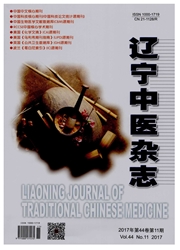

 中文摘要:
中文摘要:
目的:以健康受试者和缺血性脑中风患者为研究载体,从脑局部一致性(ReHo)的角度揭示针刺治疗缺血性中风的中枢机制,为针刺治疗缺血性中风的临床应用提供科学的可视化依据。方法:采用BOLD-fMRI成像技术,以10例健康被试者(A组)和9例缺血性中风患者(B组)为研究对象,比较B组中风患者治疗前后与A组健康受试者ReHo的异同。结果:B组中风患者治疗前与A组健康者相比,多个脑功能区ReHo存在差异;治疗后基底节区、脑初级运动区、运动前区、辅助运动区、顶下小叶等区域ReHo发生动态变化。结论:静息状态下缺血性中风患者存在脑功能区异常,基底节区是缺血性中风患者运动功能损害的主要脑区;脑初级运动区、运动前区、辅助运动区、顶下小叶是中风患者静息态脑功能重组及代偿的关键区域,是针刺治疗中风患者重要的调制区域。
 英文摘要:
英文摘要:
Objective:Taking healthy volunteers and patients with ischemic stroke as the research subjects,the research explored the central mechanisms of ischemic stroke from the regional homogeneity,aiming at providing evidences for acupuncture to treat ischemic stroke.Methods:BOLD-fMRI technology was adopted in the research.We chose 10 healthy volunteers(A group) and 9 patients with ischemic stroke(B group) as participants.The dynamic change of regional homogeneity of the whole brain for B groups was observed before and after treatment.Results:Before treatment,compared with healthy volunteers(A group),the abnormality of regional homogeneity occurred in many encephalic regions for B group.After treatment,compared with healthy volunteers(A group),regional homogeneity signal changed obviously in SG and cerebellum,M1,PMA,SMA and IPL for B group.Conclusion:Abnormality of regional homogeneity in the resting-state occurred in many encephalic regions of patients with ischemic stroke,SG was the main encephalic region which resulted in motor function injuries;M1,PMA,SMA and IPL were the critical regions for patients with ischemic stroke to accomplish reorganization and compensation of the brain function in the resting-state,which became the important focus for acupuncture treating patients with ischemic stroke.
 同期刊论文项目
同期刊论文项目
 同项目期刊论文
同项目期刊论文
 期刊信息
期刊信息
